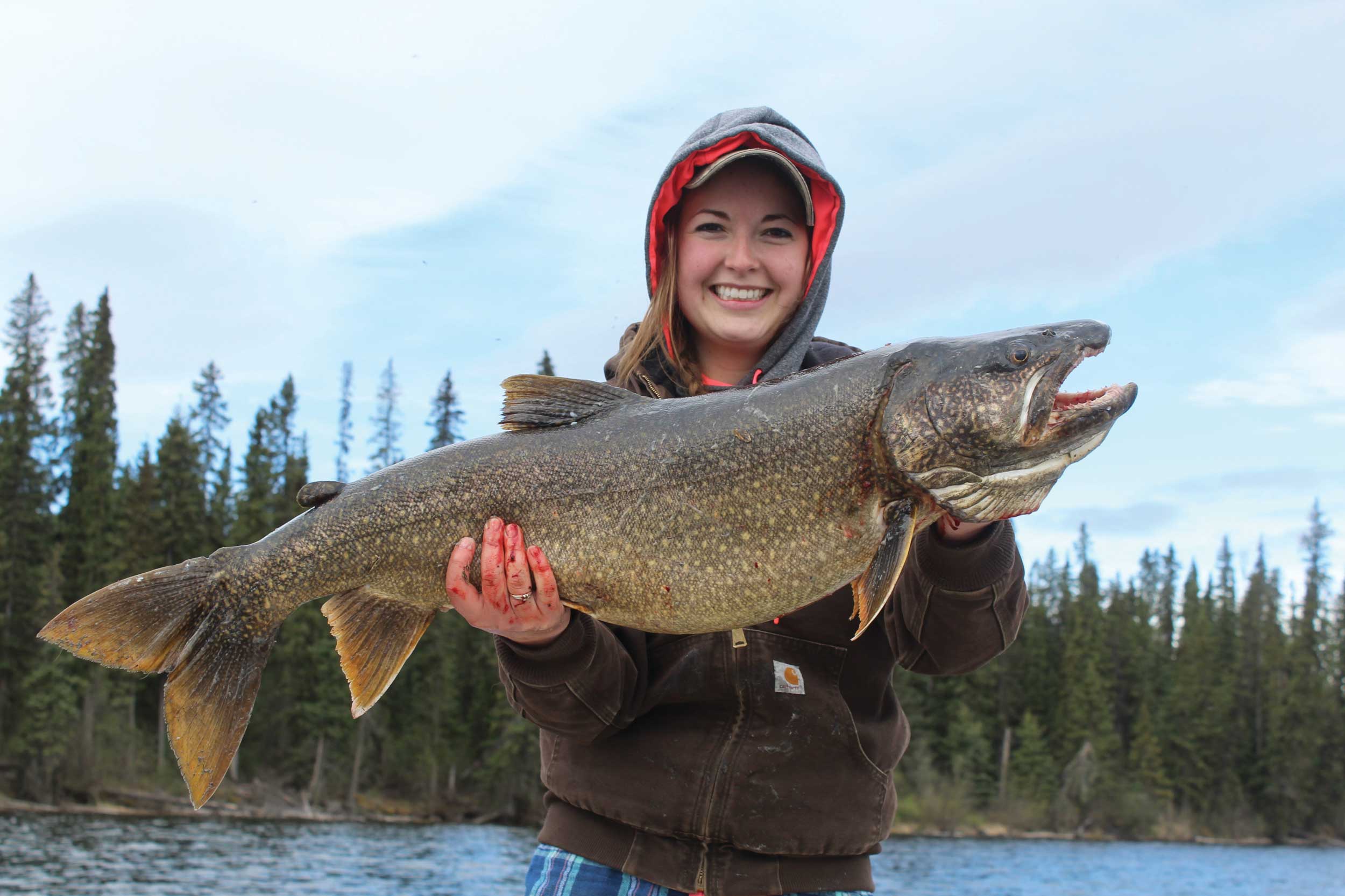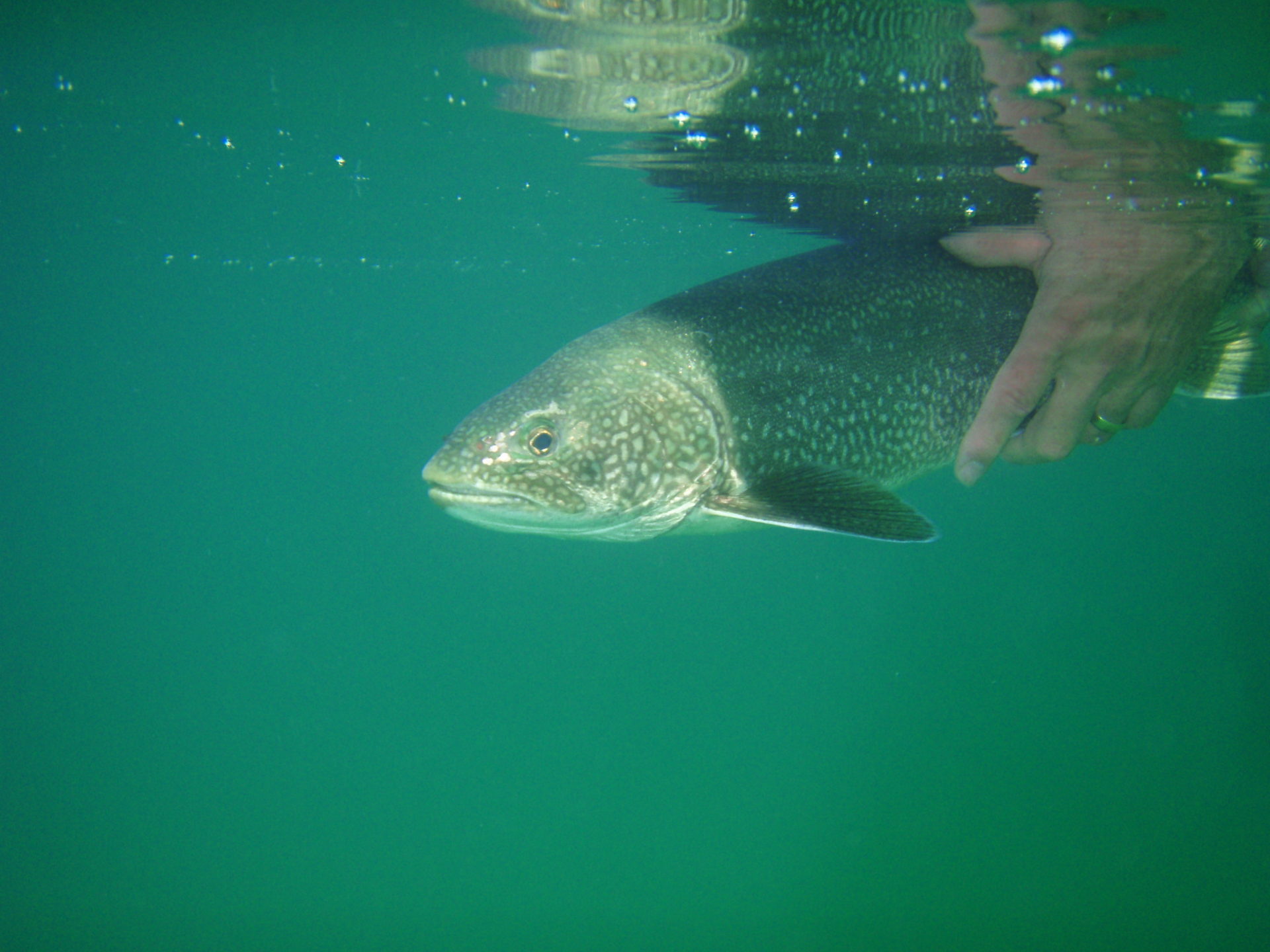BC is well supplied with cold-water lakes, especially the northern interior of the province. This is one of the requirements of a sports fish that some BC fishers, particularly those in the south of the province, may not be familiar with. Lake trout (Salvelinus namaycush) are big fish, native to northern North America, primarily to Canada from sea to sea to sea, and some northern US states.
Advertisement
In spite of the name, lake trout are not a trout, but a char. Char is the common name for a group of species in the Salmonidae (salmon) family and includes the similarly misnamed bull trout and brook trout, as well lake trout. A quick check is that true trout have dark spots on a lighter-coloured body and char have light spots on a darker coloured body. Lake trout are typical salmonid shape, with a dark body covered with small, pale spots and a white belly. Grey is a common colour, and grey trout is one common name, but depending on local water conditions, lake trout bodies can also be dark green or brown. Their tail is deeply forked, and the fins have a white leading edge, typical of chars.

In BC, lake trout are found mainly in the northern half of the province, although their native range extended south to the Shuswap drainage. However, stocking by humans has increased their range in BC almost to the US border. They do not tolerate saltwater, so there are no anadromous (sea run) populations as there are for other salmonids, such as rainbow trout (steelhead).
Advertisement
Lake trout prefer clear, cold water and migrate to the deep parts of lakes as the water temperature rises in summer. In this nutrient-poor environment, they grow slowly, taking six years to reach maturity, but can live to 20 years and occasionally much older. Adults average about four kilograms, although a trophy can weigh 20 kilograms and the current sport-caught record is a 32.7-kilogram whopper “laker” from Great Bear Lake in the Northwest Territories. Juvenile lake trout forage on zooplankton and small insects, gradually including small crustaceans, mussels, snails and leeches as they grow. For larger lake trout, the menu can include all of these food items, but smaller fish are a key part of their diet. Prey is almost any fish that shares the same water, including juveniles of their own species, and, since they can’t afford to be picky, occasionally small mammals too.
Fall is lake trout spawning season. They are iteroparous, that is, they can go through many spawning cycles during their lifetime, compared to salmon that spawn only once and then die. They normally spawn every year; however, in really cold and unproductive northern lakes, they may have to skip a year in order to conserve body resources. Spawning habitat is a clean coarse gravel or rubble lake bottom. They prefer shallow water, less than two metres, but can spawn at depths to 15 metres. Wave action keeps the prime spawning sites free of sand and silt. Female lake trout do not excavate a nest or redde in the gravel as do other salmonids, but simply disperse their eggs and allow them to settle into the spaces in the coarse substrate. In relatively warm lakes, spawning may be delayed to as late as December after the autumn weather has cooled the shallow water to an acceptable 10 degrees Celsius. Incubation takes three to five months, but it can be as long as seven months in a very cold environment. The parents take no part in protecting the eggs or young fish. Soon after hatching, lake trout fry migrate to the safety and comfortably cool temperatures of deeper water.
Advertisement

Because of their potential size, lake trout are popular with anglers. However, being slow growing and late to mature means they are susceptible to overfishing. Most management regions in BC have specific lake trout regulations to ensure that the harvest is sustainable. There is a debate among anglers as to the table qualities of this fish. Some people like eating them, while others do not. There does seem to be consensus on two points, though: that smaller lake trout, less than two kilograms, are less oily and have firmer flesh than the big fish, and that lake trout are best eaten fresh because the oily meat deteriorates quickly in a freezer.
So, BC anglers have opportunities in much of the province to fish for lake trout, a Canadian classic, but they might want to ensure that the frying pan is close to the boat launch.